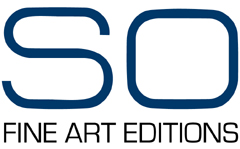Neil Dunne talking art in the current climate.
Next in our mini-series of artist chats is with artist Neil Dunne. Neil has been working on his solo show due to be hosted with us in June. This is usually the time that the artist is finishing off works, framing and organising so we wanted to check in and see how he was doing.

Gallery: With the loss of your studio due to COVID -19, how are you coping?
Neil: It has been a strange transition, although I have being trying to stay creative. I moved a lot of my paints and drawing equipment home and focused primarily on this. In some ways it forced me to diversify how I create and in turn spawned new ideas and ways of working. I enjoy drawing but never put quite enough emphasis on it to deliver finished pieces, working in a smaller space has really encouraged me to work to those parameters.
Given that I largely work in a scale much bigger, I was again faced with the transition to a home studio, condensing my style and process. Interestingly, I found a elements of older work start to creep through I felt a new graphic element emerge and the use of gouache and charcoal – normally reserved for preliminary works – began to compete with my painting on canvas.
It has been a truly interesting experience to say the very least; I try to cope with the complications of the outside world by really focusing on funnelling these emotions into my work. Now, more than ever, it feels like art will play a pivotal role for in the dissemination of ideas and my placement in the world.
Gallery: Do you believe art plays an role in politics, society and important issues such as climate change? If so, how does your work fit into this sociopolitical landscape?
Neil: I believe art plays a fundamental role in translating the sociopolitical environment in which it was created. In all art forms and styles it is my firm belief this fundamental constructs of society creep in, it is unavoidable. I sometimes feel these are prominent in abstract, conceptual work – The thought process. This is present on a personal level through abstract and more non-representational work. The artist, like everyone else, lives and experiences the same complicated realities as everyone else. The emotion and experience is presented in unique and conflicting ways but within each piece there will always be a significant concept and emotional dedication to the piece.
My work reflects on aspects of a sociopolitical landscape, I find my work is heavily involved with these elements and derives from my own interactions and interpretations of the world. I like that these elements exist throughout my work, there is always a distinct emotional response from me and this type of expression is fundamental.
Gallery: What three artists would you like to be compared to or you have been influenced by?
Neil: I find this a hard question to answer for a number of reasons. Like many Artists I certainly have the ones whose work speak to me the most, although I’m unsure if I would ever like to be compared to them. Comparisons can sometimes be perceived as competition and a lot of those artists who I am most influenced by would be contemporaries of mine.
On the international level I have come to love the work Ida Ekblad, her painting is really inspirational with the scale and tangible use of paint it couples up to present really interesting work. Sean Scully is another artist who has really grown on me recently; He is such a heavyweight painter and worked with abstraction for so long.
Gallery: As always, a really interesting chat, thanks Neil.
